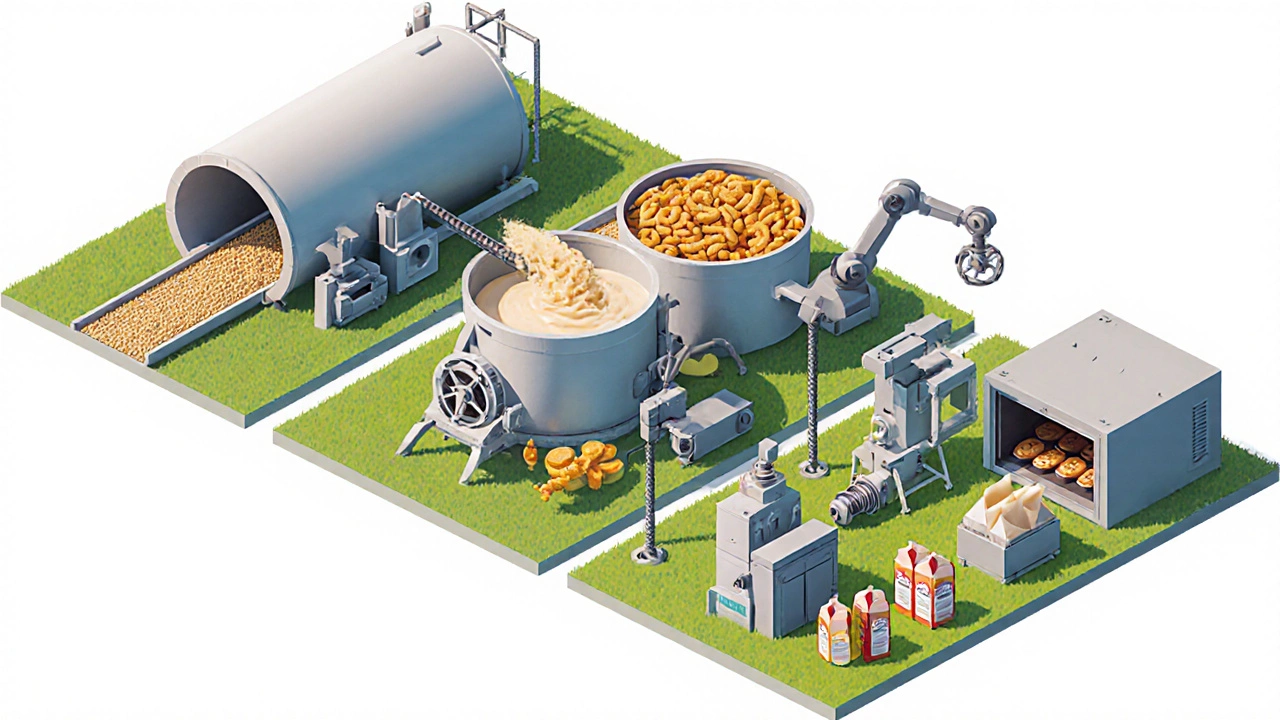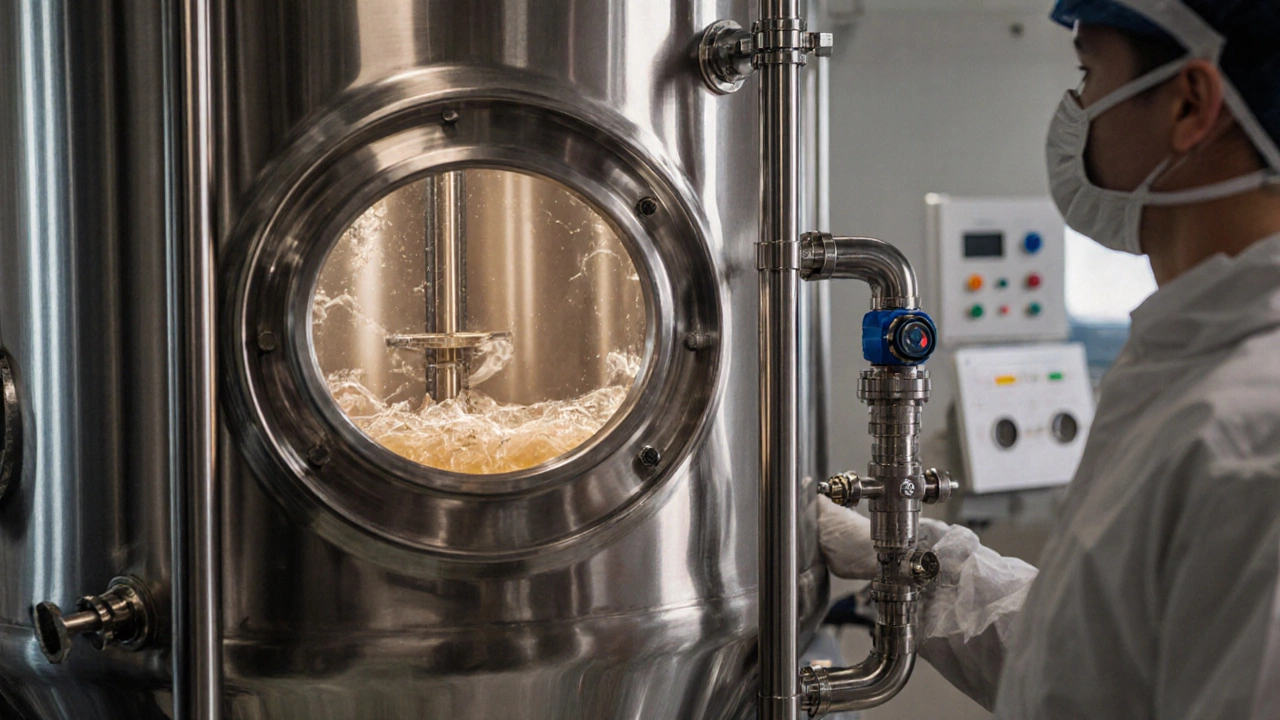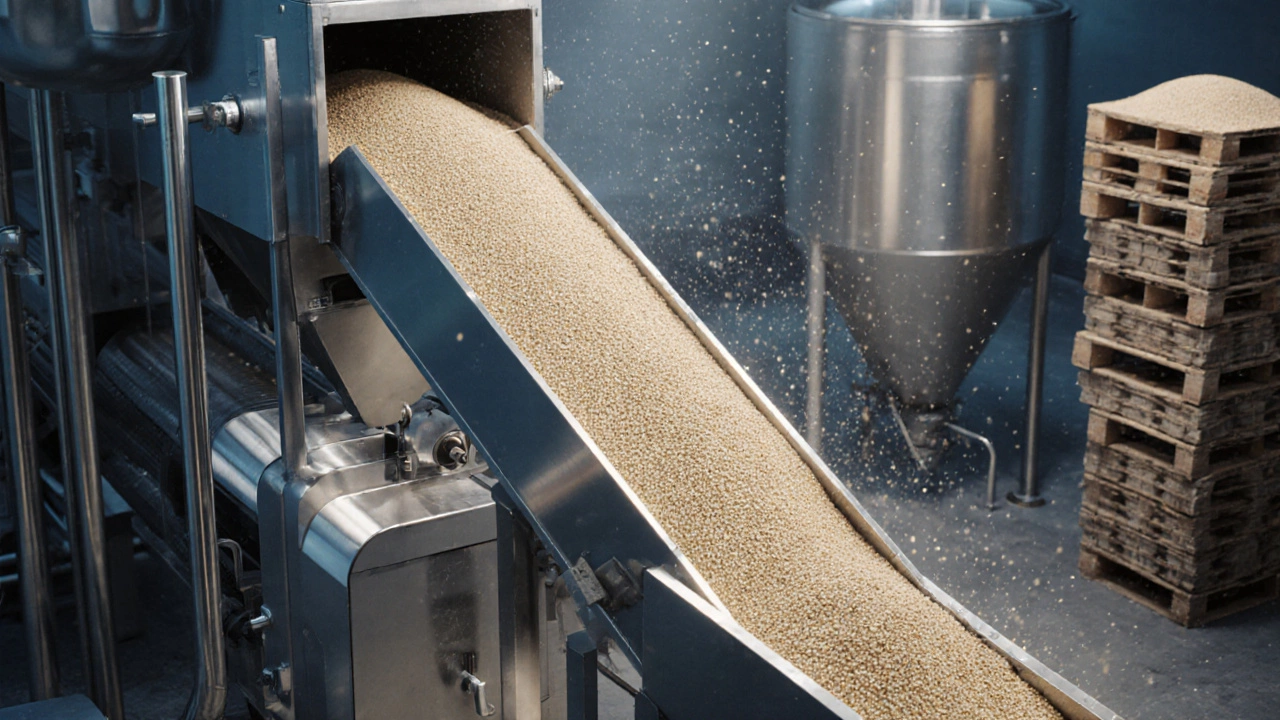Food Processing Unit Classifier
Identify Processing Unit Classification
Classification Overview
Food processing units are classified into three levels based on the stage of production:
Units are also categorized by processing method:
Classification Results
Enter a processing operation to see its classification
Food processing unit is a facility or set of equipment that converts raw agricultural ingredients into safe, edible products. Understanding how these units are grouped helps plant designers choose the right gear, comply with standards, and cut waste. Below you’ll see the most common ways experts slice the landscape, from broad stages to niche equipment families.
Key Takeaways
- Processing units are usually split into primary, secondary and tertiary stages.
- Each stage groups several unit operations like heating, mixing or packaging.
- Thermal, mechanical, biochemical and packaging units are the four big sub‑categories.
- Choosing the right classification speeds up layout planning and regulatory approval.
- A quick comparison table lets you match a unit’s purpose with typical equipment.
Why Classify Processing Units?
When you sketch a new plant or upgrade an old line, you need a common language. Classification gives you:
- Clear communication between engineers, suppliers, and auditors.
- A way to benchmark energy use and cost per unit of output.
- Guidance on which hygiene standards (e.g., HACCP steps) apply.
Most standards-ISO 22000, EU Food Law, FDA Food Safety Modernization Act-reference these groups directly.
Three‑Level Hierarchy: Primary, Secondary, Tertiary
The broadest split mirrors the flow of raw material to finished pack.
| Level | Goal | Typical Operations |
|---|---|---|
| Primary | Convert raw agricultural commodity into a stable intermediate | Cleaning, Size reduction, Heating, Fermentation |
| Secondary | Shape, enhance, or combine intermediates into the final food product | Mixing, Extrusion, Baking, Pasteurization |
| Tertiary | Package, label, and prepare product for distribution | Filling, Sealing, Labelling, Palletising |
This ladder works for everything from wheat flour mills to ready‑to‑eat meals.

Sub‑Categories Within Each Level
Engineers often drill down further based on the energy form or mechanical action involved. The four most useful buckets are thermal, mechanical, biochemical and packaging units.
Thermal Processing Units
These units add or remove heat to achieve safety, texture, or shelf‑life goals.
- Pasteurization: Low‑temperature, long‑time (LTLT) or high‑temperature, short‑time (HTST) systems that kill pathogenic microbes.
- Sterilization: Autoclaves or retort vessels that push temperatures above 121 °C.
- Drying: Tray dryers, spray dryers, and freeze‑dryers that reduce moisture to < 5 %.
Thermal units are typically classified as Thermal processing unit in engineering specs.
Mechanical Processing Units
Here the focus is on force, motion, or size change without major heat input.
- Grinding and milling: Hammer mills, roller mills, and stone grinders.
- Mixing and blending: Ribbon blenders, high‑shear mixers, and planetary mixers.
- Extrusion: Twin‑screw extruders that shape dough into snacks or pasta.
These fall under the label Mechanical processing unit.
Biochemical (Fermentation) Units
Units that harness microbes or enzymes to transform substrates.
- Fermenters: Stainless‑steel vessels with temperature, pH, and agitation control.
- Enzyme reactors: Continuous flow reactors for cheese making or juice clarification.
Often grouped as Fermentation unit.
Packaging Units
The final step where product meets the consumer.
- Filling machines: Volumetric, gravimetric, or aseptic fillers.
- Sealing: Heat sealers, vacuum packers, and modified atmosphere packaging (MAP) chambers.
- Labeling and coding: Ink‑jet printers, laser etchers, and RFID applicators.
These are collectively called Packaging unit in most plant layouts.
Checklist for Selecting the Right Classification
- Identify the raw material state (solid, liquid, bulk).
- Define the safety hurdle (microbial, enzymatic, physical).
- Map the required energy form (heat, shear, biocatalysis).
- Choose the level (primary, secondary, tertiary) that matches the product’s value‑add stage.
- Cross‑check with regulatory guidelines for that class of unit.

Common Pitfalls and How to Avoid Them
Mis‑labeling a unit can lead to costly redesigns. For example, treating a high‑shear mixer as a simple batch mixer may ignore the need for a variable‑speed drive, causing premature wear.
Another trap is overlooking cleaning‑in‑place (CIP) requirements. Thermal units often need CIP loops; forgetting this adds downtime and contamination risk.
Finally, don’t forget the downstream impact. A faster extrusion line may overload a downstream dryer if you haven’t balanced capacity across the classification hierarchy.
Next Steps for Plant Planners
- Map your product flow and assign each step to one of the three levels.
- Within each level, tag the operation with one of the four sub‑categories.
- Use the table above to shortlist equipment models that fit the classification.
- Run a brief pilot to verify that the chosen class meets speed, quality, and hygiene targets.
- Document the classification in your design brief; it will simplify permitting and supplier communication.
Frequently Asked Questions
What distinguishes a primary unit from a secondary unit?
Primary units handle raw material preparation-cleaning, size reduction, or initial heating. Secondary units actually create the finished food shape or formulation, such as mixing dough, extrusion, or pasteurization.
Can a single piece of equipment belong to more than one classification?
Yes. A continuous steam‑jet blender both mixes (mechanical) and heats (thermal), so it is often listed under both sub‑categories. The dominant function decides the primary label.
Why is the term “unit operation” still relevant?
Unit operations are the building blocks of any food processing unit. They provide a universal way to discuss heat transfer, mass transfer, and chemical change without tying the conversation to a specific machine model.
How does classification affect HACCP planning?
Each classified step maps to a HACCP control point. Knowing whether a step is thermal, mechanical, or biochemical tells you which hazards (microbial, physical, chemical) to watch and which critical limits to set.
Is “food processing unit classification” a recognized industry standard?
While there is no single ISO titled exactly that, the concept is embedded in ISO 22000, ISO/TS 22002‑1 (food‑specific prerequisite programmes), and many national food‑manufacturing guidelines.
Understanding food processing unit classification helps you speak the same language as engineers, auditors, and equipment suppliers. Use the hierarchy, sub‑categories, and checklist above to design cleaner, safer, and more cost‑effective food plants.
